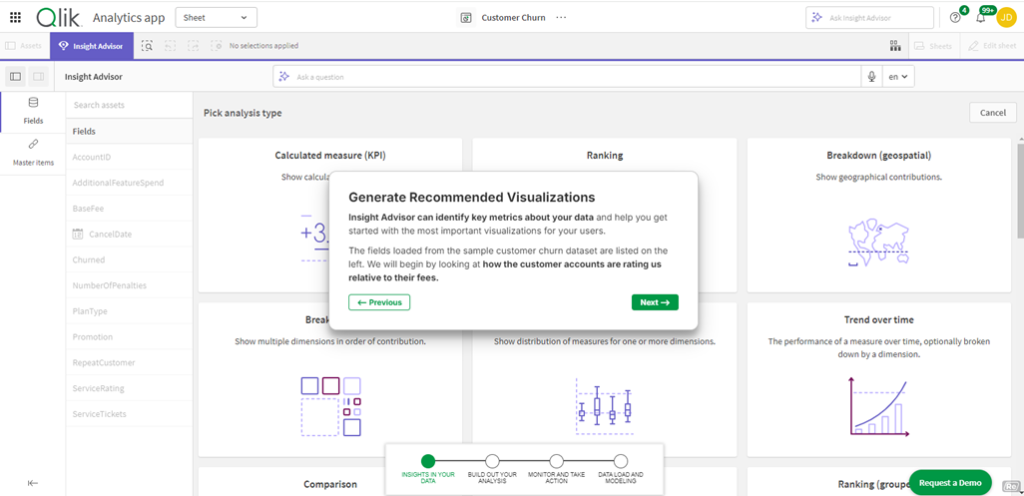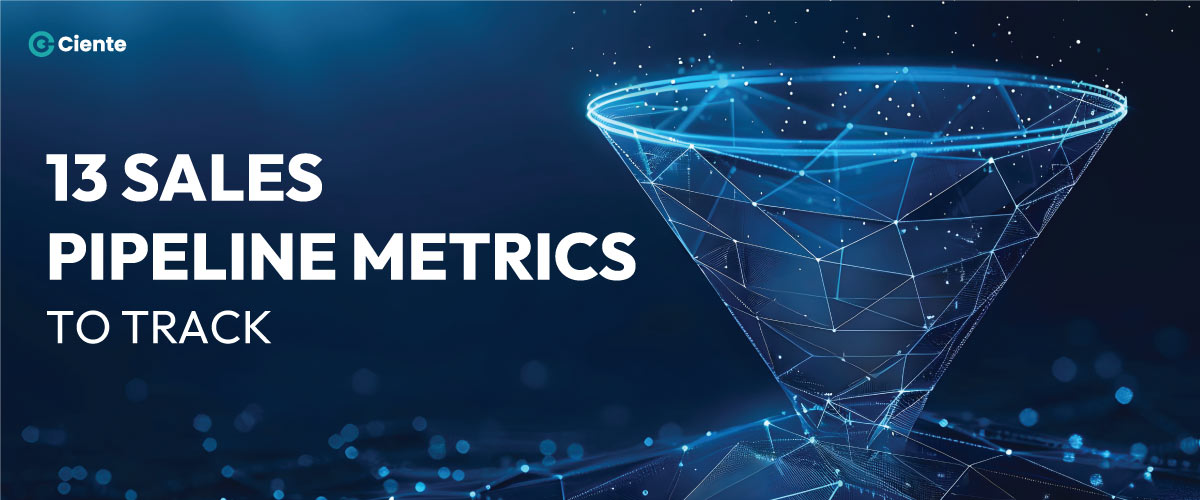Business Intelligence (BI) Platforms to Help Optimize Your Workflow
How can businesses overcome the challenges of data mining to unlock the hidden potential of raw data and convert them into meaningful insights?
Organizational discipline is the key to workflow management. Decluttering and sorting through the data we work with streamlines our operations and boosts productivity.
To play chess, the pieces must be staged in a specific way and move strategically. We consider all the positions on the board before making a move against the opponent.
Managing the heaps of data is one of the most complex tasks. Our business objective should be improving our management skills to curate a smart business strategy. The more sorted the data is, the higher the possibility that it’s manageable, accessible, and easier to understand.
Data is omnipresent but how we interact with and study it remains different. We streamline these ways by engaging and understanding it through data analysis software.
Businesses require such tools for swift and comprehensive analytics to drive growth.
Each department in an organization understands and presents the relevant data differently to condense the condition of the business.
Significant BI tools for workflow management
Business intelligent platforms are crucial tools for workflow management.
These platforms combine software and additional services transforming raw data from multiple channels into actionable insights.
Business intelligence platforms work as catalysts, converting raw data into meaningful information, i.e., declutter and sort. These platforms collect, manage, organize, and analyze large quantities of data to make informed business decisions.
Additionally, it is through their functioning that data becomes accessible. They help businesses retrieve the latest, past, in-house, third-party data, etc., to help evaluate the performance. BI platforms allow the IT and other departments to work with and understand each other beyond making assumptions.
The nervous system of your organization
The right business intelligence platform works as the nervous system of your organization.
Business intelligence software integrated with visualization tools, advanced analytics, and data mining technologies offers a centralized platform.
By providing accessible insights, this software propels your business to become data-driven, and gain a competitive edge by helping simplify customer behavior.
In this fast-paced juncture where everyone requires a kickstart, business intelligence tools help you stay ahead of the curve.
How do these tools help us do that?
In practical terms, the standard BI tool helps identify the snags and address them accurately to streamline workflow operations. Additionally, it has become an efficient tool to optimize overall operations and track key metrics introducing cost-effective solutions into the business structure.
Business intelligence solutions are integral in administering your organization as data-driven.
Automation is the vehicle unleashing its potential to become one.
Use of automation in the fast-paced digital world
Across the business intelligence landscape, automation is crucial to maintaining a competitive edge in the fast-paced digital world.
Automation in business intelligence helps streamline, optimize, process, and analyze the collected data by boosting the capability to save time. Equipped with automation tools, business intelligence platforms underscore strategic and recurrent business decisions and tasks.
Have you heard of the terms, technologically-challenged or technophobe?
This is what you are labeled as if you manually attempt to collect and enter data into the system.
Introducing automation in business intelligence platforms helps save time and effort. Certain automated processes help avoid manual data entry or processing, increasing employee productivity by allowing them to focus on other strategic tasks.
Automation also helps negate other human mistakes. It reduces and corrects any errors in reports, ensuring the business maintains updated, precise, reliable, and accurate data.
In simpler terms, there are specific components of automation through which business intelligence platforms cater to your data processing and management preferences:
Data collection
Data collection is the first and most basic step of data processing.
In this step, raw and unstructured data is collected from different sources (internal and external systems), segregated to find clean authentic data, and structured uniformly for comprehensive data analysis.
Clean data is a requirement for accurate, to-the-point insights. Hence, the automation highlights and eliminates any inconsistencies, duplicates, or discrepancies.
Data Analysis
After collecting, cleaning, and integrating data, the next step is inspecting and transforming data i.e., data analysis.
Automation helps in the reliable data description, modeling, and interpretation to make data-driven decision-making using advanced analytics. In this stage, the tools help identify patterns and trends to establish correlations between data sets.
After finding a correlation, it becomes much simpler to extract meaningful insights, accentuate important information, and draw conclusions to plan a roadmap for the future.
Monitor and Track
After swift data analysis, automated processes leverage the easy access to big data to monitor and track the workflow performance.
It simplifies report generation through customizable dashboards for a clear visual representation of data and automated reporting tools.
By creating and sharing detailed and accurate reports across a user-friendly interface, stakeholders can easily access important business information.
Automation in business intelligence platforms can manage and organize large heaps of data. As the business gradually expands, it is needless to expend additional costs and resources as the automation tools have scaling-up capabilities.
The overall function of business intelligence platforms is catering to real-time insights for organizations without slowing down, such that resources and time are freed up for more significant tasks.
Understanding market trends with business intelligence tools
But the major question is – are they reliable?
Each organization has distinguishable business requirements. Choosing the perfect business intelligence software depends on the department’s needs and the volume of data.
With the data mountains inherently present within, how do businesses harness their power? Through BI systems.
However, before finalizing the right tool, your business has to consider particular specifications –
- Ease of access and use: The BI platform should be easily accessible by all employees, i.e., from tech-savvies to technophobes. It should confidently allow the user to configure the data, process natural language, and provide required setup assistance.
- Automation capabilities: Automation is the principal foundation of business intelligence platforms. The chosen BI platform should then seamlessly integrate automation, and support natural language insights and visual report creation with one click.
- Does it support AI? With the onset of AI, we aim to look past data. To establish simpler customer service structures within the business, the software should allow chatbot assistance and other interactive and conversational AI services.
- Seamless Integration: To elevate operational management and seamless integration of processes, is the BI platform part of an ecosystem of apps? This enables an organization-wide improvement in productivity. Does the BI software allow integration with multiple data sources?
Broadly, your chosen business intelligence tools should be adept at data management. It should assist data warehousing, allow easy data mining, and aid in data modeling processes.
Top services to manage your workflow
The ideal tools and services for your business can transform your workflow and instill productivity.
Here are the 5 best business intelligence platforms of 2024:
QlikSense by Qlik
Qlik is available for Web, iOS, and Android.
QlikSense comprises a diverse range of visualization and data reporting features offering versatile options.

QlikSense is a complete, fully customized analytics solution.
Sample data is already available within QlikSense which saves you the importing time. This BI platform works efficiently with one dataset or hundreds, enabling comprehensive visuals detailing the sales numbers.
These are structured into customizable graphs and provide an overview of the dataset(s). After the platform completes uploading and visualizing your data, its built-in AI-powered Insight Advisor allows you to ask questions regarding natural language, insights, summaries, and predictive analysis across different data sources.
One of the best features of this platform is its accessibility. Available across different devices, you can access your reports and graphs to make edits anytime and anywhere – all-in-one-functionality.
Microsoft Power BI by Microsoft
Microsoft Power BI is available for Web, iOS, and Android.
Power BI is one of the most widely used business intelligence platforms.

Image source: https://www.microsoft.com/en-us/power-platform/products/power-bi
It allows effortless integration with other Microsoft products to quickly track any edits/changes made to the available data. One of its most supportive features is access to Microsoft Excel, PowerPoint, and Teams with a click.
Microsoft Power BI, a web-based business analytics suite, highlights real-time trends and offers valuable insights through comprehensive data visualization. This BI tool seamlessly integrates and is highly intuitive. If two datasets are connected, it can recognize the correlation, and changes to one are visible in the other dataset as well.
Zoho Analytics by Zoho
Zoho Analytics is available for Web, iOS, and Android.
Zoho Analytics is a self-service business intelligence software.

Image source: https://www.zoho.com/analytics/whats-new.html tm_source=Ent_analytics_campaign&utm_medium=Ent_BI-banner
Zoho Analytics offers in-depth analysis and reports using automatic data syncing, scheduled periodically. This BI tool is one of the straightforward platforms to navigate and learn through a free on-premise plan.
It has built-in AI-powered features such as conversational AI, unlimited detailed reports, and predictive analytics and allows third-party integrations.
Zoho Analytics is designed to help solo entrepreneurs manage and analyze big data, even for the novices.
If you do not understand its functionalities, it offers demo videos with a user-friendly interface with walk-throughs.
Zoho Analytics leverages visual data representation to signify data flow from one end of the pipeline to another. It offers geo maps, i.e., map layering that unearths multiple data layers and identifies the hidden dimensions.
One of its most fascinating features? Immersive report viewing between different tabs, widgets, and an upgraded dashboard builder.
Domo Data Experience Platform by Domo
Domo is available for Web, iOS, and Android.
With cloud computing taking over the internet for flexible resource sharing and economic scaling, Domo is one of the best business intelligence tools for optimizing your workflow.

Image source: https://images.app.goo.gl/4us1wVgUzPZSKNKu9
Domo allows seamless data integration from multiple sources such as databases, spreadsheets, social media, etc. It is entirely cloud-based with a faster load speed, making it easier for multinationals and small businesses.
Imagine it as a data library that connects, supporting over 1000 pre-built ones. Once the data is connected, managing it is as easy as a pie.
Additionally, it helps prepare your data, identify relationships, automate, and filter without any prior SQL knowledge. The Domo app hosts APIs, data management, and manipulation tools for all your data management preferences. It can also make the required data calculations with the Beast Mode available in the app.
Tableau by Salesforce
Tableau is available only on the web.
Tableau is one of the dynamic data visualization builders that allows diverse sharing options for team collaboration.

Image source: https://www.tableau.com/products/tableau
Tableau is one of the top-rated BI tools for team collaboration. It specializes in data visualization and discovery and its collaborative capabilities.
Using this, you can share dashboards and workbooks with your teammates. They can leave the necessary comments on the work and collaborate on the data analysis process to streamline workflow.
Tableau supports data integration from multiple platforms such as SalesForce, Google Analytics, and MS Excel and has in-built workbooks, known as Accelerators, to support the imported data. Tableau offers different products depending on your business needs, such as Tableau Server for organizations, Tableau Desktop for the general audience, and Tableau Online for hosted analytics.
What’s next for the business intelligence market?
Making important business decisions in the minimum amount of time is the need of the hour.
Business intelligence platforms rely on technological advancements to analyze data and help employees and high-level executives make significant decisions.
The business intelligence platforms help administrators extract, monitor, and enhance data from internal and external systems while producing reports and dashboards easily accessible to stakeholders and decision-makers.
Graphs, infographics, and scorecards are increasingly necessary to develop these reports.
The BI platforms offer a helping hand in Zoho analytics, data mining, modeling, and statistical analytics to harness insightful conclusions and curate these embedded graphics smoothly.
Data is the backbone of every industry.
Business intelligence platforms offer a structure to this heap by organizing and attributing meaning to them.
With the focus on automation in recent years, the demand for BI software will increase significantly for all businesses as they rush to propel their decision-making processes with confidence that their data is accurate and trustworthy.




























